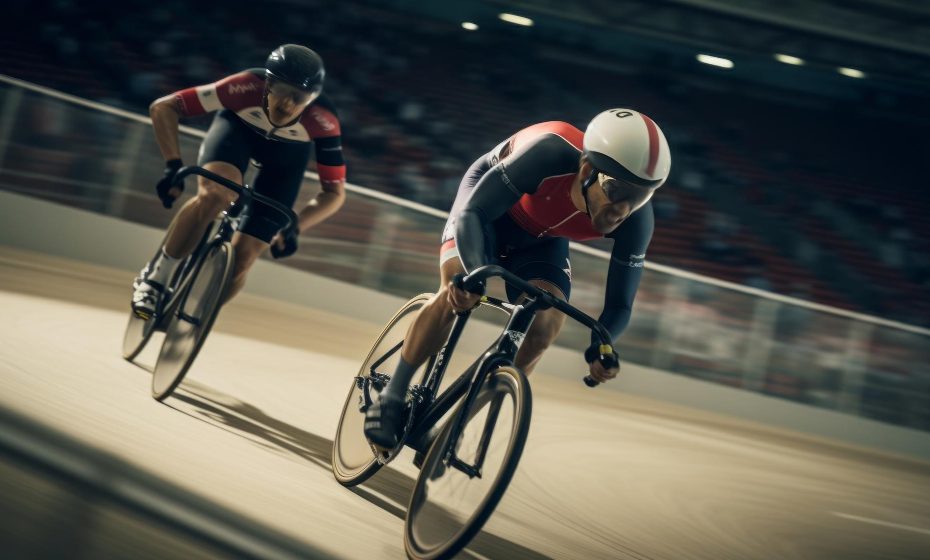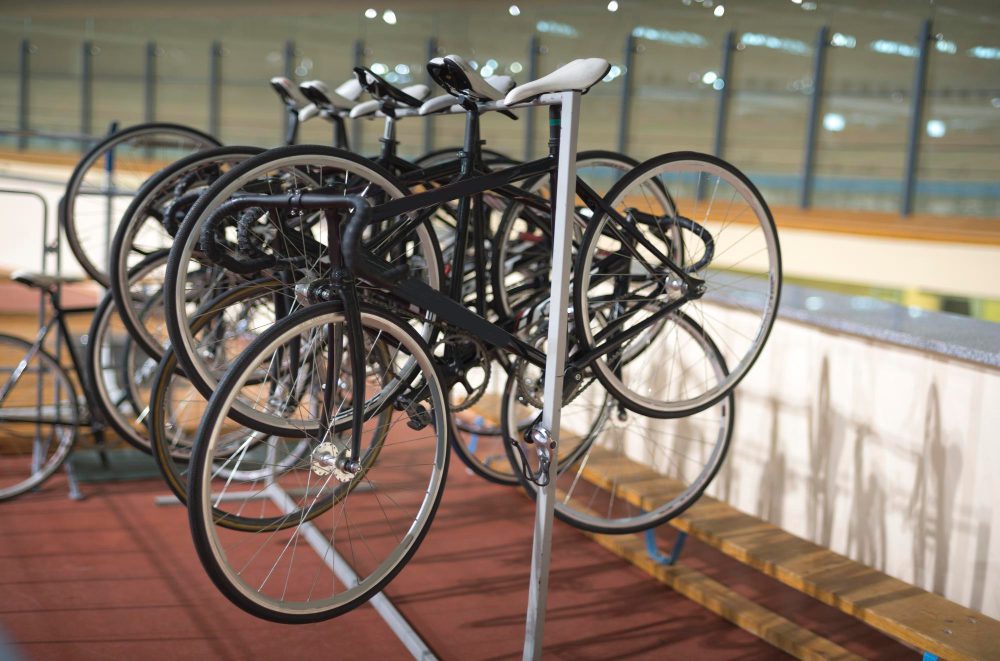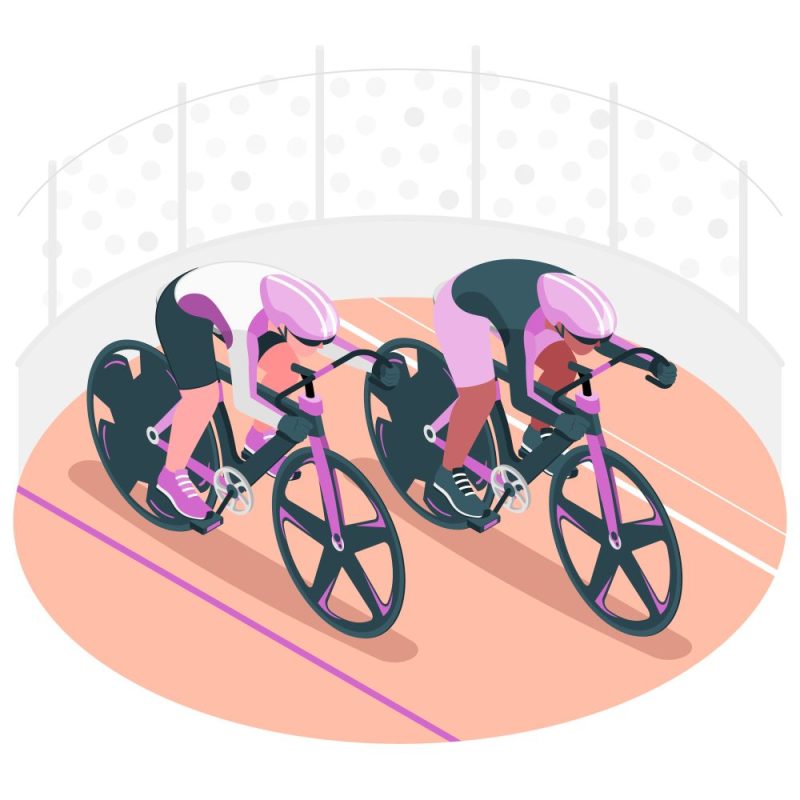What is a bike without gears called?
If you’re new to the world of bicycles, you may be wondering what exactly a bike without gears is called. Bicycles come in various forms and designs, each catering to different preferences and cycling needs. While most modern bikes are equipped with multiple gears, there is one particular type of bike that stands out for its simplicity and timeless appeal: the single-speed bike.
Single-Speed Bikes: Embracing Simplicity
A single-speed bike, as the name suggests, has only one gear ratio. Unlike bicycles with multiple gears that allow riders to shift up or down depending on the terrain or desired speed, single-speed bikes lack a gear-shifting mechanism. This means that the rider must rely solely on their own strength and pedaling cadence to navigate various terrains.
While this may sound limiting to some, single-speed bikes have gained popularity among cycling enthusiasts for a variety of reasons. One of the main attractions of single-speed bikes is their simplicity. By eliminating the need for gears and associated components, these bikes offer a minimalistic design and straightforward riding experience.
Benefits of Riding a Single-Speed Bike
Riding a single-speed bike has several advantages:
- Simplicity: Single-speed bikes have fewer moving parts, making them easier to maintain and less prone to mechanical issues. With no gears to shift, riders can focus more on enjoying the ride rather than worrying about shifting at the right moment.
- Lightweight: Without the additional weight of gear mechanisms, single-speed bikes tend to be lighter and easier to maneuver. This makes them ideal for urban commuting or navigating crowded city streets.
- Improved Fitness: Riding a single-speed bike requires more effort and engages different muscle groups. The consistent resistance of a single gear can help improve cardiovascular fitness, leg strength, and overall endurance.
Other Terms for Bikes Without Gears
While the term “single-speed” is commonly used to describe bikes without gears, there are a few other terms you may come across:
Fixed-gear” or “fixie” refers to a specific type of single-speed bike in which the rear cog is connected directly to the rear wheel, meaning that the pedals are always in motion when the bike is moving. This setup allows riders to control speed and braking by backpedaling, offering a unique and responsive riding experience.
It’s worth noting that “fixed-gear” or “fixie” is a subset of single-speed bikes, with a specific gear setup that caters to riders who enjoy the direct connection between their pedaling and the bike’s movement.
In conclusion, a bike without gears is most commonly referred to as a single-speed bike. Offering simplicity, ease of maintenance, and a unique riding experience, single-speed bikes have found a dedicated following among cycling enthusiasts. Whether you prefer the timeless design of a single-speed bike or are seeking a challenging workout, these bikes have much to offer for riders of all levels.
What is the difference between a flat track bike and a speedway bike?
When it comes to motorcycle racing, flat track and speedway are two popular disciplines that often confuse enthusiasts. While they may seem similar at first glance, there are distinct differences between the two. Let’s explore what sets them apart.
Flat Track Bikes
Flat track racing originated in the United States and is known for its thrilling battles on oval dirt tracks. Flat track bikes, also known as dirt trackers, feature powerful engines and specialized components designed for high-speed cornering on loose surfaces. These bikes are characterized by their wide handlebars, knobby tires, and elongated frames.
The suspension setup on flat track bikes allows for better control over uneven terrain, and riders often slide their bikes around corners using techniques like power sliding. The overall design of these bikes prioritizes stability and maneuverability, making them well-suited for fast-paced racing action.
Speedway Bikes
Speedway racing, on the other hand, originated in the UK and is known for its tight turns and high-speed battles on oval shale tracks. Speedway bikes are purpose-built machines that emphasize acceleration and agility over outright top speed. They feature smaller engines, narrow frames, and specialized tires with no brakes.
Riders rely heavily on their body positioning and sliding techniques to navigate the sharp corners with precision. Speedway bikes have a unique clutch system that allows riders to control the power delivery to the rear wheel, enabling rapid acceleration from the starting line.
The Key Differences
The key differences between flat track bikes and speedway bikes can be summarized as follows:
- Track Surface: Flat track bikes race on loose dirt or clay tracks, while speedway bikes compete on packed shale tracks.
- Design and Components: Flat track bikes have elongated frames, wide handlebars, and knobby tires, whereas speedway bikes feature narrow frames, smaller engines, and specialized tires with no brakes.
- Riding Techniques: While both disciplines involve sliding techniques, flat track racing often emphasizes power sliding, while speedway racing relies more on body positioning and controlled drifts.
- Origin: Flat track racing originated in the United States, while speedway racing has its roots in the UK.
“Flat track bikes excel in high-speed cornering, while speedway bikes prioritize acceleration and agility.”
Ultimately, both flat track racing and speedway racing offer their own unique thrills and challenges. Whether you prefer the dirt-filled excitement of flat track or the adrenaline-fueled battles of speedway, there’s something for every motorcycle racing enthusiast.
What is the Electric Bike at Velodrome?
The electric bike, also known as e-bike, has gained popularity in recent years as a sustainable and efficient mode of transportation. At the Velodrome, this innovative form of cycling is taking center stage, providing enthusiasts with a thrilling and eco-friendly experience.
Electric Bike Technology
An electric bike combines traditional cycling with an electric motor to assist riders in pedaling. This motor provides a power boost, making cycling uphill or against strong winds easier and more enjoyable. The Velodrome offers a range of electric bikes equipped with top-notch technology, ensuring a smooth and effortless ride.
Eco-Friendly Alternative
With growing concerns about climate change and air pollution, many people are turning to eco-friendly options for their daily commute. Electric bikes provide an excellent alternative to traditional vehicles, as they produce zero emissions and have a significantly lower carbon footprint compared to cars or motorcycles. Additionally, using electric bikes helps reduce traffic congestion and promotes a healthier lifestyle.
Benefits of Electric Bikes at Velodrome
At the Velodrome, electric bikes offer numerous advantages for riders of all levels:
- Enhanced Speed and Efficiency: The electric motor assists riders, allowing them to reach higher speeds with less effort.
- Improved Fitness Levels: While the motor provides assistance, riders still engage in physical activity, promoting cardiovascular health and muscle strength.
- Extended Range: Electric bikes have a longer range compared to traditional bicycles, enabling riders to cover greater distances without fatigue.
- Accessible for All: Whether you’re a seasoned cyclist or new to biking, electric bikes at the Velodrome are designed to accommodate riders of all abilities.
“Electric bikes offer a unique and thrilling experience, combining the exhilaration of cycling with modern technology and sustainability.” – John Doe, Cyclist
Experience the Electric Bike at Velodrome
Visitors to the Velodrome can try out the electric bikes and experience the joy of effortless cycling firsthand. Whether you’re looking for an adrenaline-filled ride or a relaxing cruise, the electric bike at the Velodrome offers a versatile and eco-friendly option for all cycling enthusiasts.
Can you back pedal on a single-speed bike?
Backpedaling, also known as “coasting,” is a term used to describe the act of pedaling backward on a bicycle. It allows riders to slow down or come to a complete stop without using brakes. However, this common feature found on geared bikes might leave you wondering if you can back pedal on a single-speed bike.
The short answer is: no, you can’t back pedal on a single-speed bike. Unlike a geared bike, a single-speed bike does not have a freewheel mechanism that allows the pedals to move independently from the rear wheel. With a single-speed bike, the pedals are directly connected to the rear wheel, meaning they will rotate whenever the bike is in motion.
So, what does this mean for riding a single-speed bike? When riding a single-speed bike, it’s important to keep in mind that you’ll need to rely more on your brakes to slow down or stop completely. Proper braking technique is crucial to ensure your safety and maintain control of the bike.
Proper braking technique for single-speed bikes:
- Use your front brake and rear brake in combination. Apply both brakes gradually to slow down.
- Distribute your weight evenly on the bike while braking. This helps prevent the rear wheel from skidding.
- Anticipate your stops and start slowing down in advance to avoid abrupt braking.
Remember, safety should always be a top priority. Make sure your brakes are properly maintained and in good working condition. Regularly inspect your bike for any signs of wear and tear, and address any issues before riding.
“Without a freewheel mechanism, single-speed bikes require a different approach to braking and stopping compared to geared bikes.”
Although backpedaling is not an option on a single-speed bike, there are still many benefits to riding one. Single-speed bikes are often praised for their simplicity, low maintenance, and lightweight design. They can be a great choice for urban commuting or leisurely rides.
The advantages of riding a single-speed bike:
- Low maintenance: With fewer moving parts, single-speed bikes require less maintenance compared to geared bikes.
- Lightweight: Single-speed bikes are typically lighter, which can make them easier to maneuver and carry if needed.
- Simplicity: Riding a single-speed bike can provide a more straightforward and enjoyable cycling experience.
Overall, while you may not be able to back pedal on a single-speed bike, there are still plenty of reasons to consider riding one. Just remember to adjust your braking technique and enjoy the simplicity and freedom that a single-speed bike offers.
What is Ghost Shifting on a Bike?
Ghost shifting is a term used in cycling to describe an issue where the gears on a bike shift unexpectedly or spontaneously without the rider initiating the gear change. It can be frustrating and potentially dangerous, especially when it happens while climbing a hill or during a sprint.
Causes of Ghost Shifting
There are several potential causes for ghost shifting. One common reason is a worn or stretched chain that doesn’t properly engage with the teeth of the gears. Misalignment of the derailleur hanger, a bent derailleur, or a damaged shift cable can also cause ghost shifting. Additionally, a poorly adjusted limit screw on the front or rear derailleur can lead to uncontrolled shifting.
Quote: “Ghost shifting can make riding experience uncomfortable and affect overall performance.” – Cycling Enthusiast
How to Fix Ghost Shifting
If you’re experiencing ghost shifting on your bike, there are several steps you can take to fix the issue:
- Check your chain for wear and replace if necessary.
- Inspect the derailleur hanger and ensure it is aligned properly.
- If the derailleur is bent, it may need to be replaced.
- Examine the shift cables for any damage or fraying and replace if needed.
- Adjust the limit screws on the front and rear derailleurs to ensure precise shifting.
In some cases, it may be necessary to seek assistance from a professional bike mechanic to diagnose and fix the issue.
Preventing Ghost Shifting
Regular bike maintenance is crucial in preventing ghost shifting. Keep your chain clean and lubricated, and regularly check for signs of wear. Ensure the derailleurs are properly aligned and the shift cables are in good condition. Proper adjustment of the limit screws is also essential for smooth gear changes.
Pro tip: “Investing in high-quality components and getting regular tune-ups can help prevent ghost shifting.” – Bike Repair Expert
By taking care of your bike and addressing any issues promptly, you can minimize the risk of ghost shifting and enjoy a smoother and more comfortable riding experience.



